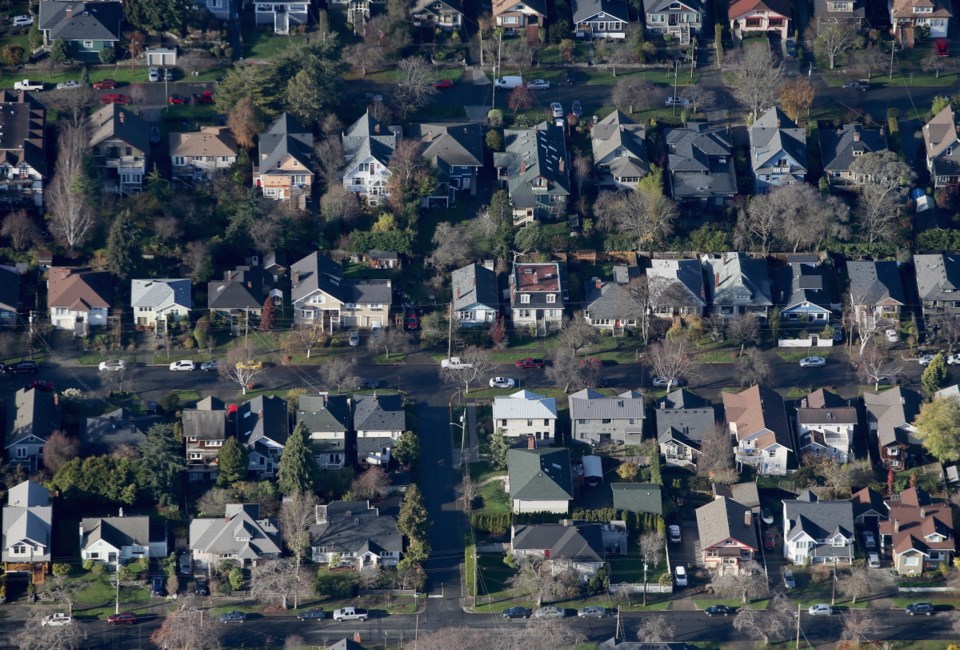According to the Victoria Foundation’s recent Vital Signs report, our region’s greatest challenge is our high cost of living.
Many low- and moderate-income households spend more than they can afford on housing and transportation, leaving insufficient money for other essential goods such as food and medicine. We can solve this problem with smart policies that create more affordable housing in walkable urban neighbourhoods.
To do so, we must first overcome some persistent myths.
Myth 1. Affordability only concerns housing.
What is affordable, you might ask? Experts define affordability as households spending less than 45 per cent of their total budget on housing and transportation, the two largest costs for most families.
This recognizes that a cheap house is not truly affordable if in an isolated area with high transportation costs, and households can rationally spend more for a home in a walkable urban neighbourhood where vehicle expenses are low.
The Capital Regional District’s recent Housing and Transportation Cost Estimate Study confirmed that central neighbourhoods are most affordable overall. In addition to financial savings, living in a walkable neighbourhood improves residents’ health and reduces pollution emissions.
Myth 2. Affordable housing requires subsidy.
Some people assume, incorrectly, that all affordable housing requires subsidies, but in fact, most lower-priced housing consists of older homes built by commercial developers. We can increase our affordable housing supply by allowing the market to build more moderate-priced housing.
A recent study, The Effect of New Market-Rate Housing Construction on the Low-Income Housing Market, by economist Evan Mast measured how new multi-family housing increases a community’s overall affordability. He found that as families move into new apartments they create a sort of housing musical chairs, by freeing up lower-priced units where they previously lived, a process called “filtering.”
His analysis indicates that adding 100 new market-rate apartments typically frees up 58 low-priced homes in a community, increasing affordable housing supply.
Critics of new housing often overlook this effect. For example, Victoria city council recently rejected a proposal in the Cook Street Village to replace four existing houses with a 48-unit multi-family building because it contained no subsidized units. However, by adding 44 net units the project would ultimately free up 26 lower-priced homes in existing buildings, increasing our affordable housing stock.
Myth 3. It’s “us against them.”
Most opponents of moderate-priced infill are homeowners who think that they have nothing to lose by limiting new development. However, over the course of our lives, most people need a variety of housing types.
Homeowners have good reasons to support development of more “missing middle” housing, such as townhouses and low-rise apartment buildings, so they can continue living in their neighbourhood when it’s time to downsize, and to allow family and friends to live nearby.
Myth 4. Growth destroys neighbourhoods.
Our regional population grows at about 1.5 per cent annually, due to residents having children and people moving from elsewhere. To accommodate this growth and drive down prices our region must add 2,000 to 4,000 homes per year.
To be affordable, healthy and sustainable, this should consist primarily of compact housing in walkable areas. Will this infill destroy our community? Not at all. Neighbourhoods can accommodate 1.5 per cent annual growth by gradually adding missing middle housing.
Myth 5. Everybody owns a car so every home needs lots of parking.
Not everybody needs a car. In fact, the most recent CRD Origin Destination Household Travel Survey shows that 20 per cent of Victoria households are car-free, and this is likely to increase due to walking and bicycling improvements, more e-bikes, expanded carsharing and ride hailing, and better public transit.
It is wasteful and unfair to force car-free households to pay for costly parking facilities they don’t need. By unbundling parking (renting parking separately from apartments) we increase affordability and encourage people to use more sustainable mobility options.
The real meaning of Christmas, Hanukkah and Kwanzaa is hospitality; welcoming people into our community.
By allowing more compact infill development we can ensure that everybody, including youths, families with children, pensioners, and people with disabilities, can find suitable homes in our walkable neighbourhood.
Joseph Calenda is a planning consultant, Eric Diller is with Island Transformations, Todd Litman is with Cities for Everyone, and Julian West is with Urban Thrive.



